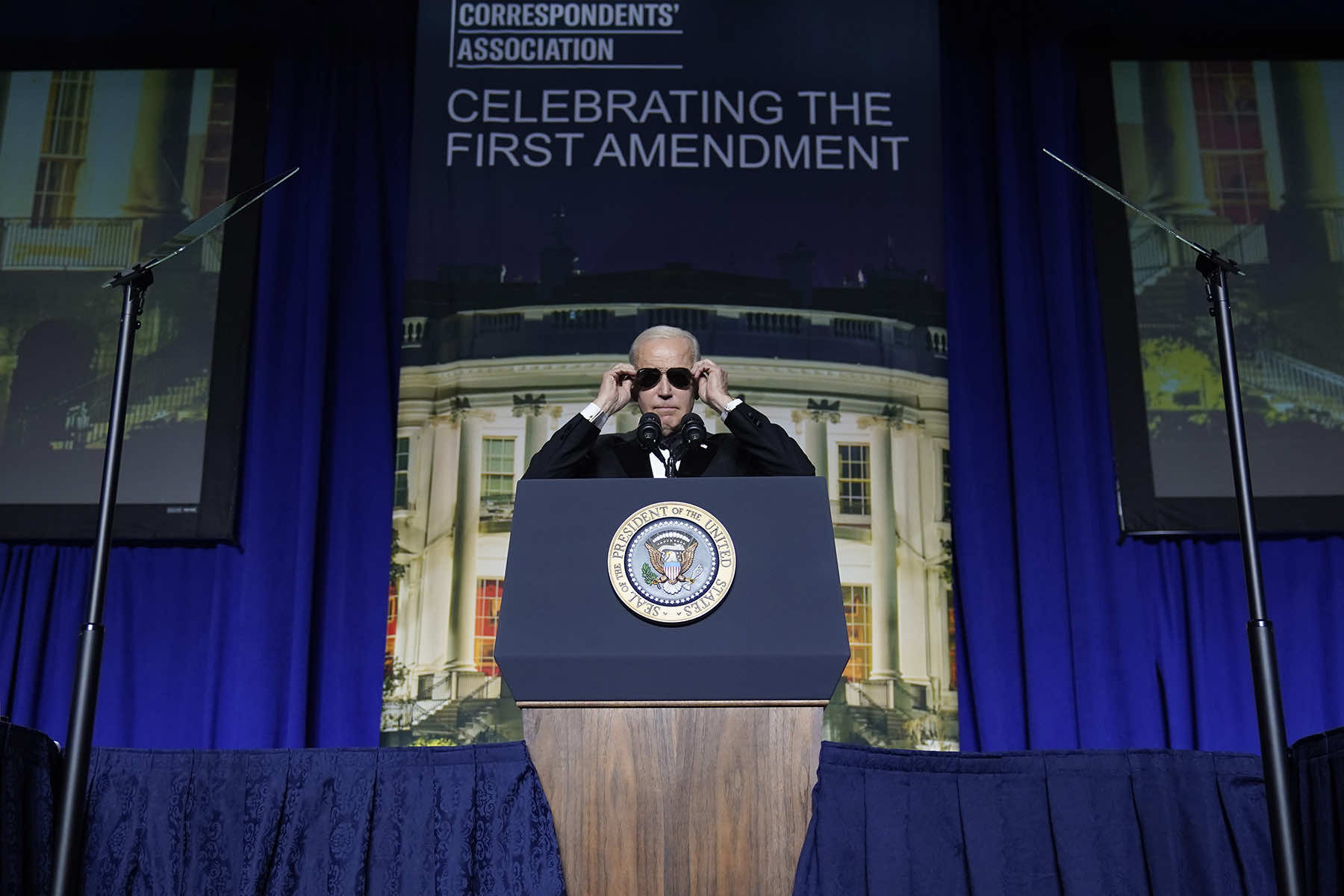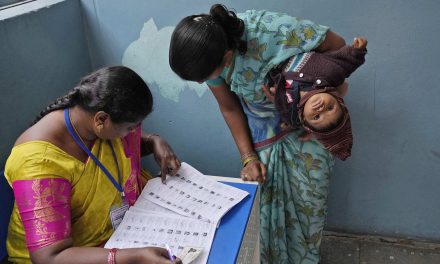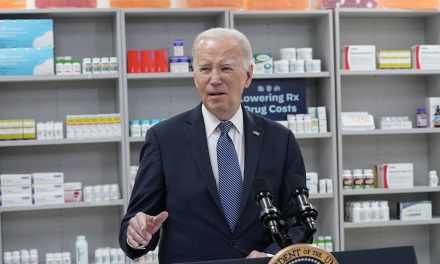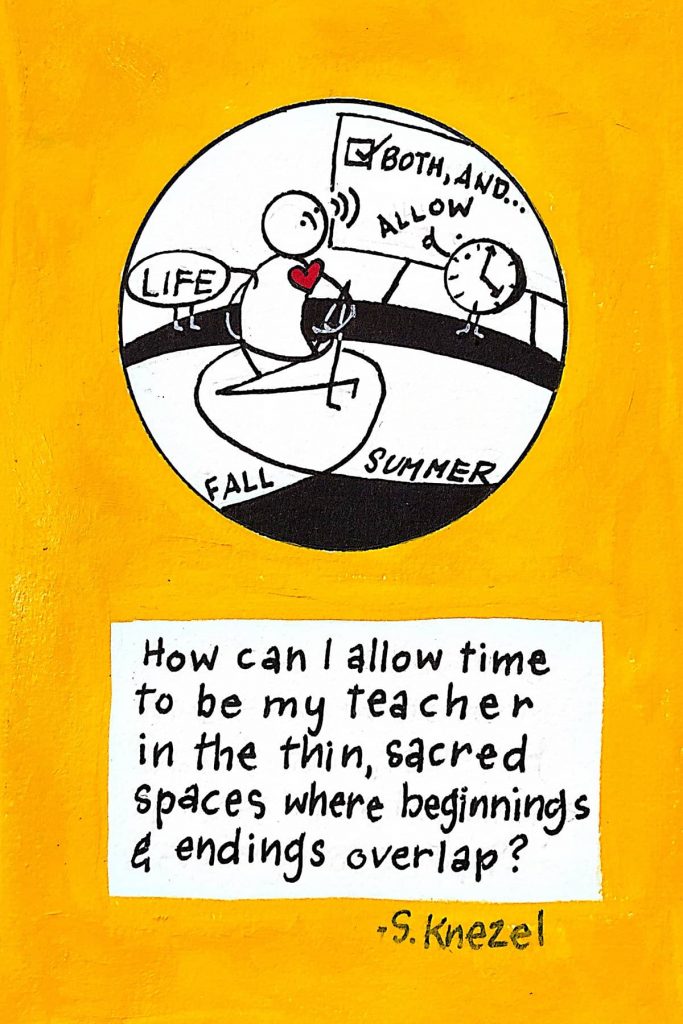
Whether it is a grinning President Joe Biden as “Dark Brandon” or Donald Trump’s face superimposed onto a scene from HBO’s “Game of Thrones,” both presidential campaigns this year have embraced digital memes, the lingua franca of social media.
The campaigns of the current Democratic president – and the criminally convicted ex-president, adjudicated rapist, and a documented pathological liar – enthusiastically create and share content trying to shape the narratives around both men.
President Biden’s campaign even recently posted a job seeking a manager of meme pages.
With tens of millions of people using social media as a primary information source, the battle of memes could affect who wins in November. Many Americans say they are not excited about a Biden-Trump rematch and growing digital habits make it harder to reach people through traditional spaces for political advertising like print publications or television.
Memes can be an edgier, faster way to get a political point across than a block of text or a lengthy video. But online misfires have hurt candidates and created major controversies. Here is a look at how memes are shaping presidential politics.
WHAT IS A MEME?
Memes have been around longer than you think. The term “meme” was coined in 1976 by British evolutionary biologist Richard Dawkins, who used it to refer to a piece of information that is imitated and shared, be it a slogan, a behavior, an idea.
With the rise of internet culture, digital memes have skyrocketed in popularity. They often take the form of visual content like an image or a video with some kind of message that speaks to people who get it because of some knowledge they have or membership in a particular group.
Memes do not have to be funny or satirical, but that makes them more likely to be shared widely. And while politicians these days work to deliberately create and share memes, some of the most well-known ones were unintentionally sparked.
One of the earliest memes of the modern era was former Vermont Governor Howard Dean’s enthusiastic scream the night of the Iowa caucuses, with videos and images of the Democrat’s guttural shriek being widely shared, drawing ridicule and damaging his already struggling presidential bid.
When President Barack Obama was moving into the White House in 2009, the photos of outgoing President George W. Bush with the text, “Miss me yet?” were broadly shared by Bush’s supporters.
A 2011 photo of then-Secretary of State Hillary Clinton wearing sunglasses and staring at her phone became a popular meme the following year, “Texts from Hillary,” purporting to show her sending snarky texts to politicians and celebrities.
“If you do it well, you tap into something that the group agrees upon or is feeling suspicious about; you tap into something that connects with the audience,” said Rebecca Ortiz, an associate professor of advertising at Syracuse University who has researched the influence of memes around political identity.
HOW DO THE TWO CANDIDATES APPROACH MEMES?
President Biden’s campaign has created its own stockpile of photos and videos for distribution on official Biden-related accounts. According to a Biden campaign official, advisers are also looking to partner with third-party creators in the coming months, with the hopes of reaching the followings of users who already seem aligned with a pro-Biden message.
By developing relationships with outside creators, campaign officials hope that some undecided or as-yet unpersuaded voters will glom onto President Biden’s message if they receive it from another account they are already following.
“We’re trying really hard to run a digital program that is authentic to our candidate, who is probably not spending all his time on Twitter — actually, he definitely is not,” said Clarke Humphrey, senior adviser for digital persuasion for the Biden campaign. “So I think we just have been really creative about how to leverage all the corners of the internet so that he can be where he needs to be without him actually having to go to those places necessarily.”
Trump, a prolific user of social media even before he ran for president, has long embraced memes and shared them, as have his political aides and some of his adult children. His oldest son, Donald Trump Jr., shares them frequently and refers to himself on Instagram as a “Meme Wars General.”
WHAT ARE SOME EXAMPLES OF THEIR CONTENT?
President Biden’s team has embraced “Dark Brandon,” reappropriating a right-wing conspiracy meme that depicted the president as a menacing force and used a nickname, “Brandon,” that become an in-joke among conservatives for insulting him.
While “Dark Brandon” originally depicted President Biden as a shadowy threat, Democrats adopted it, using the image as a meme to mock conspiracy theories about President Biden’s purported influence on events like the Super Bowl and portraying him as a powerful force to tout his accomplishments.
Now, the campaign sells signs, mugs, baby onesies, and even coffee bags portraying President Biden as “Dark Brandon” with red laser eyes.
Trump and his staff regularly share memes that glorify him in over-the-top ways, such as depicting him to be leading a band of dancing Bollywood soldiers.
In April, right before the total solar eclipse swept across North America, Trump shared a meme video on his Truth Social media account that featured clips of people staring up at the sky wearing eclipse glasses and cheering as the sky darkened, before cutting to an image of the sun with a large silhouette of Trump’s head blocking it out as people cheer.
Both the Biden and Trump campaigns quickly clip potentially embarrassing videos of their opponent and post them online within minutes, injecting those moments into the social media bloodstream and often driving traditional news coverage.
WHEN HAVE THE MEMES GONE WRONG?
Trump and his campaign often share content created by outside meme-makers,often geared to his base supporters, and sometimes disavow content that stirs outrage later.
In 2016 when he shared a meme about Clinton that appeared to depict the Star of David atop a pile of cash, evoking an antisemitic trope. Trump deleted the image but called it “a basic star, often used by sheriffs.”
In May, Trump drew backlash for sharing a video meme on Truth Social that included references to a “unified Reich” among hypothetical news headlines if he wins the election in November.
The “unified Reich” meme was created by an outside group of meme makers that The New York Times reported has collaborated with the Trump campaign. The Dilley Meme Team describes itself as “America’s greatest MAGA Members” and “Trump’s Online War Machine” with their creations sometimes shared by Trump himself.
Brenden Dilley, who leads the Dilley Meme Team, did not respond to emailed questions about the group’s work but posted a reply on X claiming he would grant an interview in January 2025, after the next presidential inauguration.
WHOSE MEMES ARE GOING FURTHEST?
Both candidates have tens of millions of followers across social media networks, as do their campaign accounts, but it is difficult to track the number of times any particular meme is shared, or remixed and shared again.
Trump has more social media followers than President Biden on Instagram, TikTok, Truth Social – Trump’s radical conservative social media platform, and the oligarch Elon Musk’s X, though the former president has only used X once since his account on the site, then known as Twitter, was locked after the January 6 insurrection.
Trump’s lone post since then was to post one of his criminal mug shots. It, too, has become a meme.














